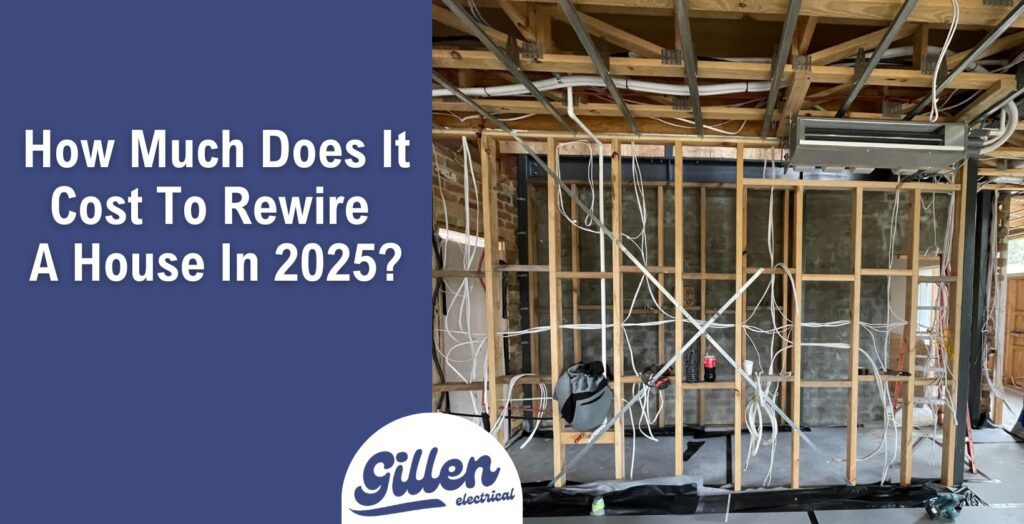The cost to rewire a house in Australia is between $10,000 and $20,000. This range covers small 2-bedroom homes through to 4-bedroom double-storey properties with complex layouts. Rewiring includes removing outdated cabling, installing new wiring, updating the switchboard, and reconnecting circuits to meet safety regulations.
A commercial electrical contractor will price differently for residential compared to multi-unit or commercial spaces, but the core process remains the same. Rewiring can be full or partial, depending on the condition of your existing electrical system.
This guide covers what’s involved in rewiring a house, cost by house size, full vs partial rewiring, switchboard upgrades, and when a rewire is necessary.
What’s Involved In Rewiring A Home
To rewire a home, all old cables are removed and replaced with new TPS wiring to meet AS/NZS 3000 standards. This includes cabling for lighting, socket outlets or powerpoints, appliances, and fixed systems like smoke alarms.
Every circuit is tested before being energised. Power must remain off during the work, and all safety devices need to be installed or upgraded. A Certificate of Electrical Safety is provided when the job is complete.
Cost Guide By House Size And Layout
Rewiring a 2-bedroom single-storey home costs between $7,000 to $10,000. For a 3–4 bedroom home, expect between $10,000 and $20,000, depending on wall access and layout. Large double-storey homes or homes with additions can cost $15,000 to $25,000.
Cabling routes, ceiling heights, and existing wall materials impact labour time. Homes with brick walls or no roof access require more time and labour.
Quotes usually include switchboard replacement, safety switches, testing, and documentation.
Full Vs Partial Rewiring: Key Differences
Full rewiring is required when a home has original rubber, cotton, or lead-sheathed cabling. These materials are unsafe and non-compliant. A full rewire includes every lighting and power circuit, kitchen appliances, hot water, oven, and meter box connections.
Partial rewiring applies when only some circuits are outdated. This option costs less and is suitable for staged renovations or specific safety upgrades.
Safety Upgrades And Switchboard Replacement Costs
Switchboards must be upgraded when rewiring to support new circuits and safety protection. Most older switchboards don’t have RCDs and surge protection, which are mandatory for all new installations. The cost of a switchboard upgrade is $1,300 to $2,000, depending on board size and number of circuits.
Homes with solar or 3-phase power require different configurations. New switchboards must also meet IP rating standards and include spare slots for future expansion.
Electrician Hourly Rates And Labour Time
Labour is the largest part of the job. An electrician’s hourly rate is $100 to $120. Rewiring a home typically takes 5 to 7 days, with two electricians
Longer runs, limited access, or additional switchboard work will increase hours. Homes with finished walls or detailed trims may require extra time for careful removal and patching.
When Should You Consider Rewiring?
You should consider rewiring your home if it was built before 1990 and has original wiring. You need to rewire if your home was built before 1990 and has original wiring. Some of the signs that you require rewiring include: include flickering lights, burning smells, tripping breakers, or discoloured outlets.
Insurance providers may also require rewiring to issue cover. A licenced electrician can inspect and confirm what needs replacing.

